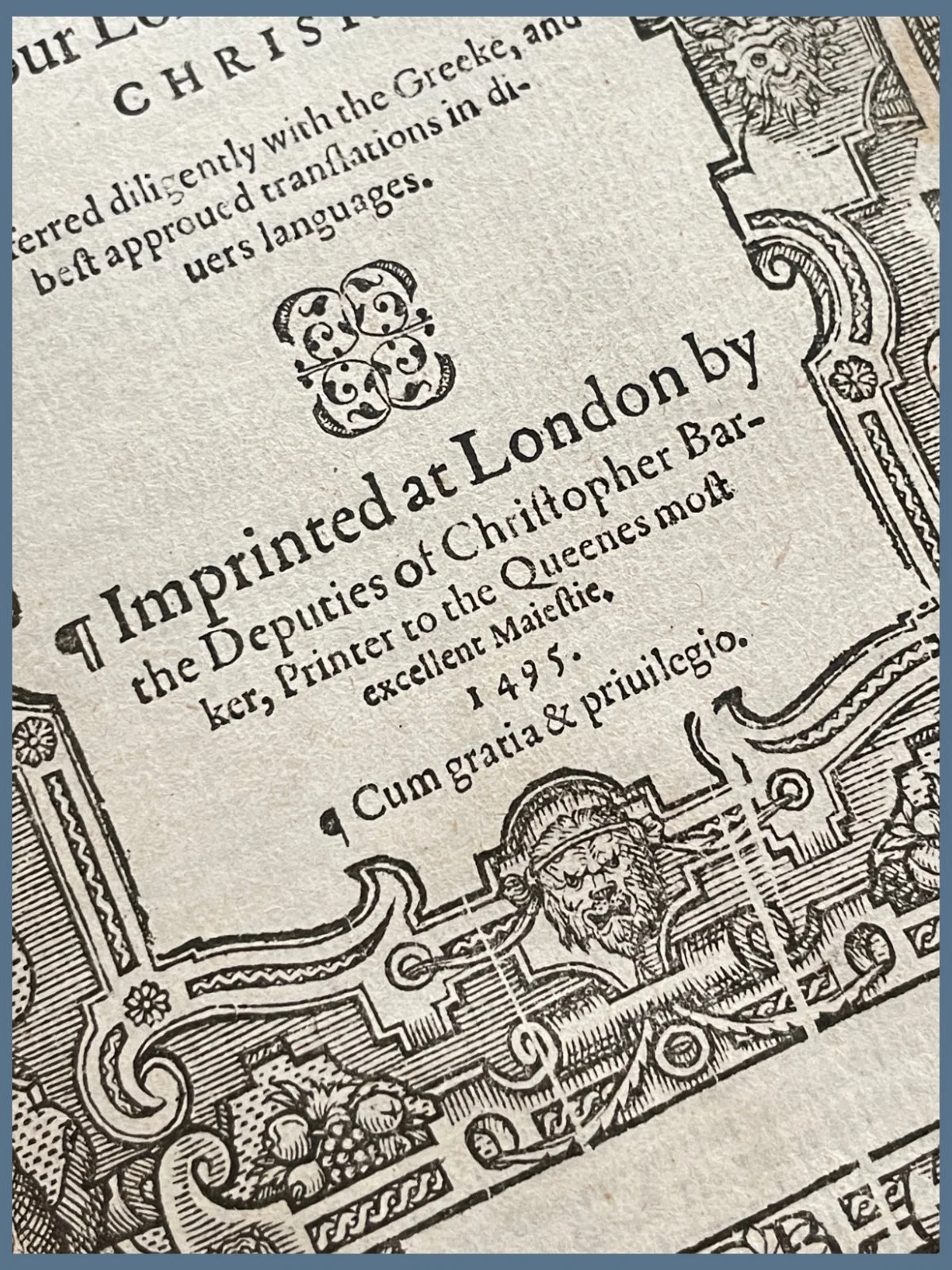The Bible, Translated according to the Ebrew and Greeke, and conferred with the best translations in divers Languages. With most profitable Annotations…
Summary
A complete quarto Geneva Bible in contemporary oak boards with the famous 1495 misprint on the New Testament title page.
Description
Begins with the Book of Common Prayer. The general title page (1594) with woodcut architectural border featuring Lady Justice and Mercy. Text in two column black letter. With Apocrypha as issued. New Testament title page with date misprinted as 1495 instead of 1594. Title is enclosed within a rectangular frame. With Two Right Profitable and Fruitful Concordances by R[obert] F. H[errey] with printed title page and colophon (n.d.). Bound with The Whole Booke of Psalmes by Sternhold and Hopkins with printed title page featuring printer’s device (1594). First chapter woodcut initials, head- and tailpieces throughout.
Collation
[par]^2, A-Z^8, Aa-Zz^8, Aaa-Hhh^8, Iii^2 [Old Testament], *^4, Kkk-Yyy^8, Zzz^10 [New Testament]. Complete with both title pages.
Binding
Contemporary calf with concentric blind-rolled frames over beveled oak boards. Decorative brass corner pieces, central bosses, and hasps. Two corner pieces and clasps perished. Rebacked in black calf with five raised bands and a red gilt-lined morocco label with the words “Holy Bible” lettered in gilt. Several old pin holes visible. Plain endpapers.
Condition
BCP lacks prelims and calendar; Text is clean with good margins throughout; Occasional marginal stain that enters the text in Proverbs, Psalms, and the Apocrypha; infrequent spotting; Psalter lacks the last leaf of Prayers; all edges red.
Note
A complete Geneva or Breeches Bible with a title page misprint. Printing in the fifteenth and sixteenth centuries was a highly manual process: each letter of type was set by hand, proofing standards varied, and printing presses themselves were prone to mechanical imperfections. This blunder almost certainly resulted from a transposition of digits by the compositor which is an easy error when working with movable type.
The misprinted “1495” is striking not only for its numerical error but for its historical impossibility, as the New Testament in English was still decades away. This mistake thus unintentionally creates a fascinating anachronism, suggesting a printed English New Testament a generation before printing had even taken root in England.
Collectors and bibliographers note such errors with special interest and misprints are highly collectible. As with the famous “Vinegar Bible” (1717), where a single word slip turned “The Parable of the Vineyard” into “The Parable of the Vinegar,” these typographical accidents have become part of the charm and lore of Bible printing history.
References
Herbert 219; STC 2161.
















